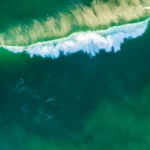The Dakshina Kannada-Udupi coast has been lightened up by the beautiful bioluminescence that is being witnessed there for the past few days, commonly known as sea sparkle! The College of Fisheries said that this was due to the bloom of dinoflagellates, scientifically called Noctiluca scintillans.
College dean A. Senthil Vel in a statement here said that though it was difficult to exactly find the reason for the sudden bloom of the Noctiluca species, prima facie it looks like the result of high temperature of the water, 32 degrees Celsius as against 30 degrees Celsius on the surface of the Earth, as observed at 6 p.m. on Saturday. The luminosity of plankton was high at 7.30 p.m. along the coast, he said.
High temperature, high quantity of organic material such as sewage and effluents and increased turbulence/wave action of the water could be the cause for the sudden bloom. Apart from human causes, the adverse impact of global warming leading to increased seawater temperature could be playing a major role in such a phenomenon. The college would track the bloom and find out if there were any fish kill or obnoxious smell from the area.
Prof. Vel said that following reports of bioluminescence, the college deputed a team of scientists comprising M.T. Lakshmipathi, T.S. Annappaswamy, D.P. Rajesh, Chandran and Harshath to Malpe-Padukare, Sasihithlu and Surathkal on Saturday. The team collected water sample for plankton analysis as well as bacterial composition. The major plankton composition consisted of Noctiluca scintillans causing bioluminescence in the coastal waters.
Bioluminescence, or light emitted by living organisms or algae through chemical reactions in their bodies, could also be the ghostly glow of bacteria on decaying organic matter or in the sediment/sand.
Bioluminescence by Noctiluca, genus of marine dinoflagellate in the family of Noctilucaceae, was the most commonly occurring event across the world, Prof. Vel said. Such blooms, which form a thick scum across the sea surface, visibly red or pink in daylight, are known to be hazardous to fish and certain other marine species. However, no such fish kill has been reported on the coast so far. The bacterial analysis would be out on Tuesday and the results would indicate if there were any other bioluminescent bacteria or other micro organisms as well.








